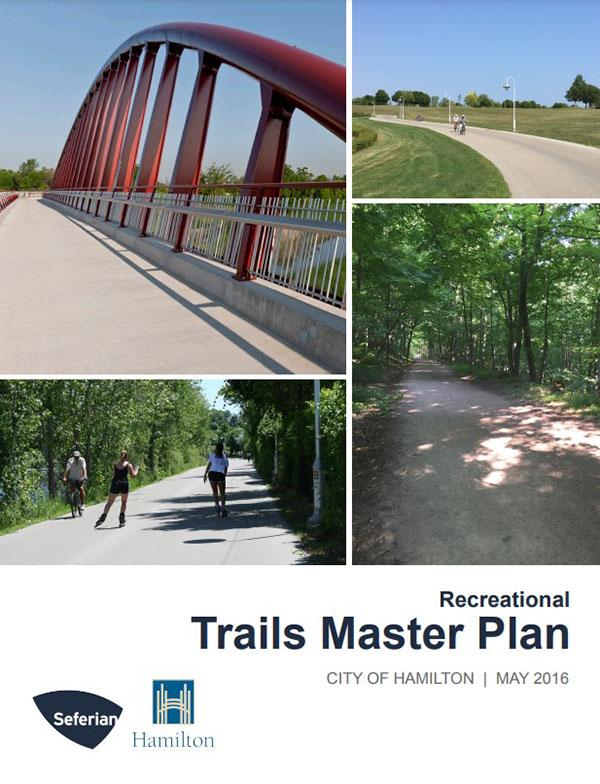Recreational Trails Master Plan
Cynthia Graham
Call 905-546-2424 ext. 2337
Email [email protected]
The goal of the Recreational Trails Master Plan is to guide the development of a connected, comprehensive, accessible and sustainable multiuse trails network throughout Hamilton and to surrounding communities to improve health and wellness for pedestrians, cyclists and trail users.
About the Recreational Trails Master Plan
The public demand for high quality connected trail systems is increasing as Hamilton continues to grow. Trails within the City of Hamilton facilitate city-wide travel and are an important resource in connecting parks, recreational centres, schools, commercial sites, cultural and institutional centres, transit facilities and residential neighbourhoods.
In 2007 the Recreational Trails Master Plan was approved by Council and since its inception has been a framework for the City for implementing the trail network. However, as the City and surrounding communities grow and new infrastructure is developed there is a need to revisit and update the Recreational Trails Master Plan. This City-wide update addresses trails and trail
infrastructure and will make recommendations for new connections throughout the City, for active transportation and recreation for residents and visitors alike.

The updated Recreational Trails Master Plan includes recommendations that aim to accomplish:
- Integrate components of the existing recreational trail system, including those planned in the 2007 report;
- Propose new trail initiatives and incorporate them with existing trail initiatives. This will help to alleviate gaps in the overall trails system;
- Integrate new trail accesses, routes, and crossings with existing conditions and planned City infrastructure projects (e.g. Highway 403, Lincoln Alexander Parkway, Red Hill Valley Parkway, waterfront, Niagara Escarpment, GO transit stations);
- Complement the City’s transportation system to support multi-modal mobility;
- Encourage inter-regional trail connections;
- Strengthen partnerships with other trail organizations and groups;
- Continue to build upon physical, economic, sustainable, and environmental design standards;
- Further develop maintenance and management standards;
- Identify new trail amenities to provide a better user experience;
- Priority recommendations for implementation and development; and
- Integrate off-road trails with the planned on-road cycling networks to better address broader community land use and transportation goals and objectives.
